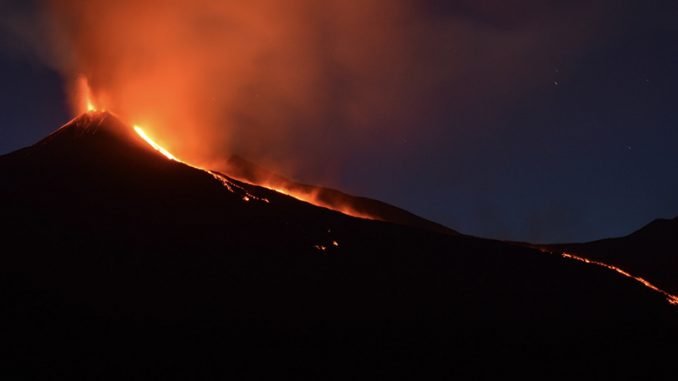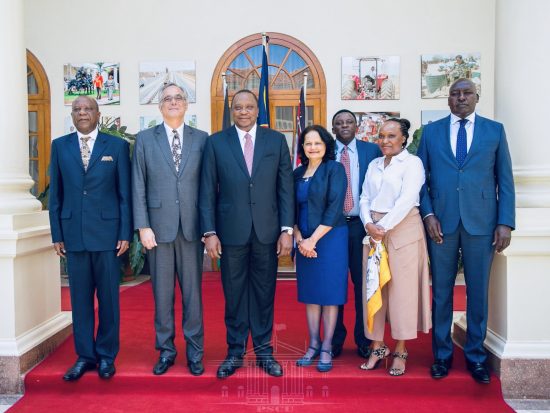
We explore how volcanoes benefit coffee cultivation, and what life is like for farmers living in these regions.
BY EMILY MENESES
SPECIAL TO BARISTA MAGAZINE ONLINE
Cover photo sourced from Unsplash
The coffee industry has long been fascinated with coffee grown in volcanic regions. But what sets volcanic coffee apart from coffee grown in other areas? Today, we’re exploring what makes volcanic coffee so good, and what it’s like for coffee farmers living and working in these areas.
Kenyan-born and currently residing in Northern California, Kavi Bailey (she/her) is the head of Grand Paradé Coffee and currently offers coffee from several volcanic regions, primarily within Guatemala and Colombia. Grand Paradé’s coffee from Antigua, Guatemala, for example, comes from a region surrounded by three volcanoes: Volcán de Fuego, Volcán Acatenango, and Volcán de Agua.

Kavi shares that volcanoes offer a multitude of benefits to the coffee plant—but the answer lies primarily in the soil. Most volcanic soils are known as Andisols (from the Japanese an meaning “dark” and do meaning “soil”), and they’re formed by tephra—a mixture of volcanic ash and rock fragments that breaks up overtime, depositing layers of nutrients into the ground. “Volcanic soil is incredibly nutrient-rich,” Kavi shares. “Phosphorus, potassium, boron, iron, zinc … all of the nutrients coffee needs to thrive are present in volcanic soil. Volcanic soil is also incredibly light and fluffy, which allows for better drainage. Beyond the soil, volcanoes also provide shade for the coffee trees, which allows the coffee cherries to ripen more slowly.”
In addition, volcanoes provide the high altitudes and microclimates that allow coffee to thrive and develop in a wide variety of ways. Graciano Cruz (he/him) of HiU Coffee Farms lists Panama as one example of these environmental factors, pointing out that the coffee that grows at the southernmost part of Volcán Barú has subtle variations in flavor from the coffee grown at the northernmost part of the volcano. Graciano shares that, like wine, coffee is affected by terroir—the complete natural environment in which it grows, including soil, topography, and climate.
Kavi and Graciano also both draw attention to the two types of volcanic eruptions: explosive and effusive. Explosive eruptions occur when magma explodes, quite literally, out of a volcano, releasing into the air tephra and nutrient-rich volcanic ash. Effusive eruptions, on the other hand, occur when lava flows out of the volcano, producing nutrient-rich soil that way. Around the world, volcanic soil is primarily the result of explosive eruptions.
But what does this mean for farmers living in the surrounding areas? Kavi shares the story of Huila, Colombia: In 2008, Nevado del Huila, the country’s highest volcano, erupted after being dormant for more than 500 years, killing six people and forcing 800 families to evacuate. When it comes to the dangers that these communities face, Kavi emphasizes the importance of acknowledging the risks and helping put protective systems in place, without forgetting the deep ties that these people have to their land.
“I always tell people, when we talk about these communities, I don’t like to use the term ‘third-world countries’—because it suggests a sort of hierarchy, a separation between ‘us’ and ‘them,’” she shares. “When we talk about these communities, we want to tell stories from their perspective, their lens. In these countries, land is a big identifier of nationalism—this is their home; they’ve passed this land on for generations and generations.
“(In protecting them), I think it’s less about having the government tell them not to live there, and more about putting emergency systems in place,” she continues, “like having a proper evacuation plan, and making sure they’ll have shelter and food in the case of an emergency.”
So what’s one lasting way that coffee professionals and consumers can help? One way is through understanding where our coffee comes from and the potential risks that went into growing it, then ensuring that farmers are being properly compensated with fair-trade prices and above. The main thing to remember is coffee is not grown in a vacuum—there are entire communities behind a single bag of coffee who deserve a secure livelihood and a stable evacuation plan.
“Many of these individuals aren’t paid enough in the first place, and when the time comes for them to evacuate, they don’t have the emergency funds to support themselves,” Kavi states. “We need to empower (these communities) long-term, because in the face of disaster, there’s always an immediate response (from Western countries) that eventually fades out. We need to think of both short-term and long-term solutions.”

ABOUT THE AUTHOR
Based in Los Angeles, Emily Joy Meneses (she/her) is a writer and musician passionate about culture and collective care. You can regularly find her at Echo Park Lake, drinking a cortado and journaling about astrology, art, Animal Crossing, and her dreams. Explore her poetry, short stories, and soundscapes on her website.

